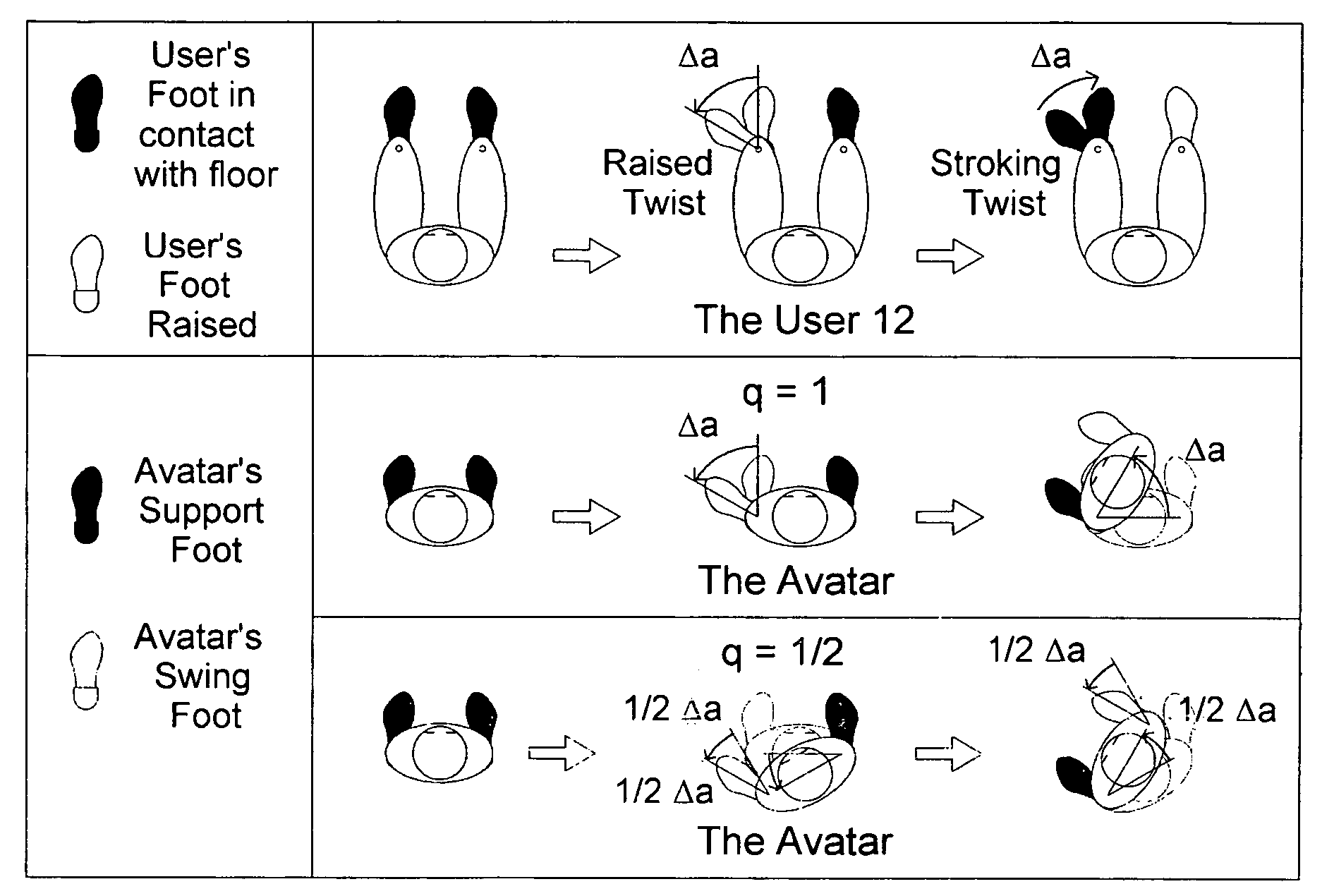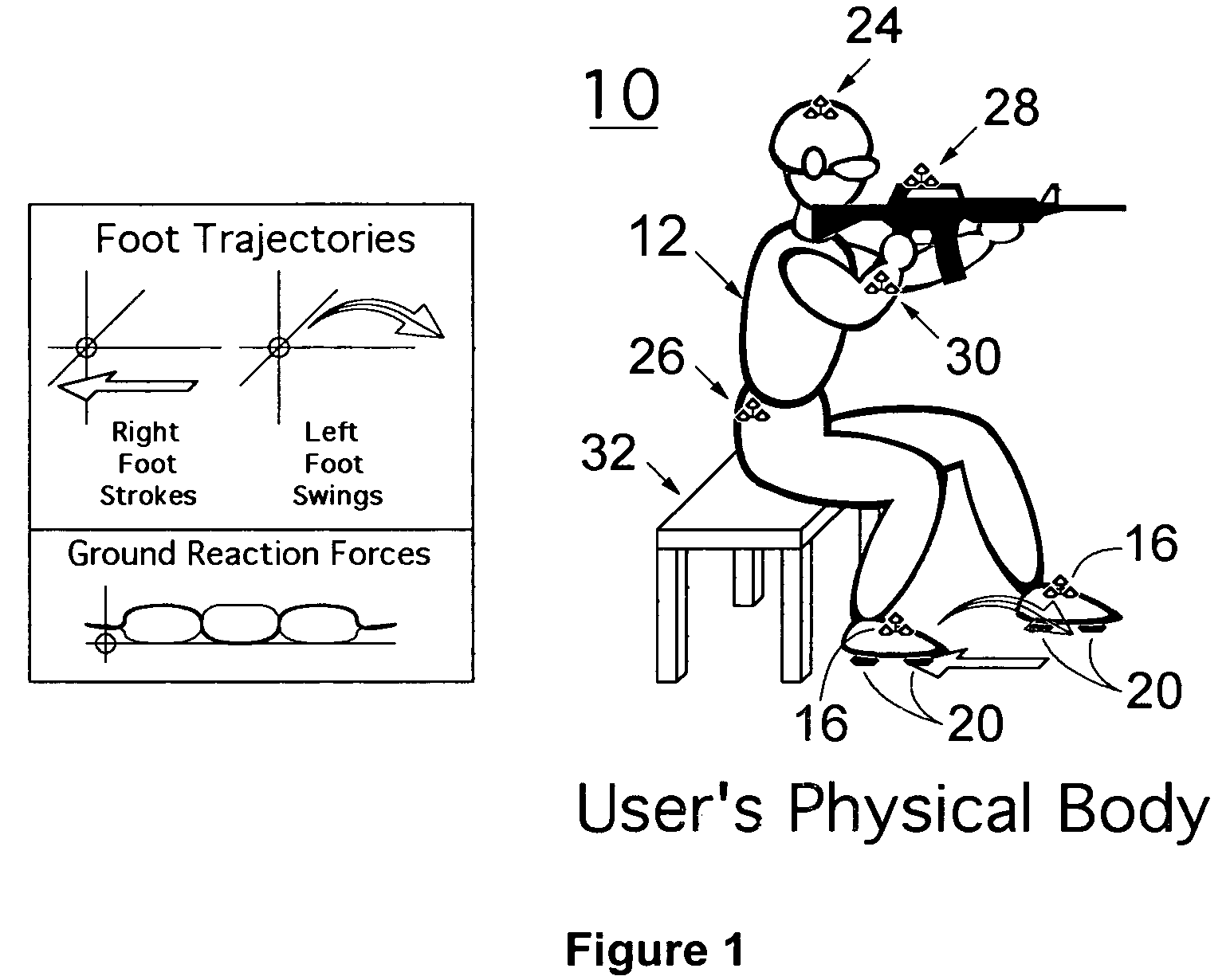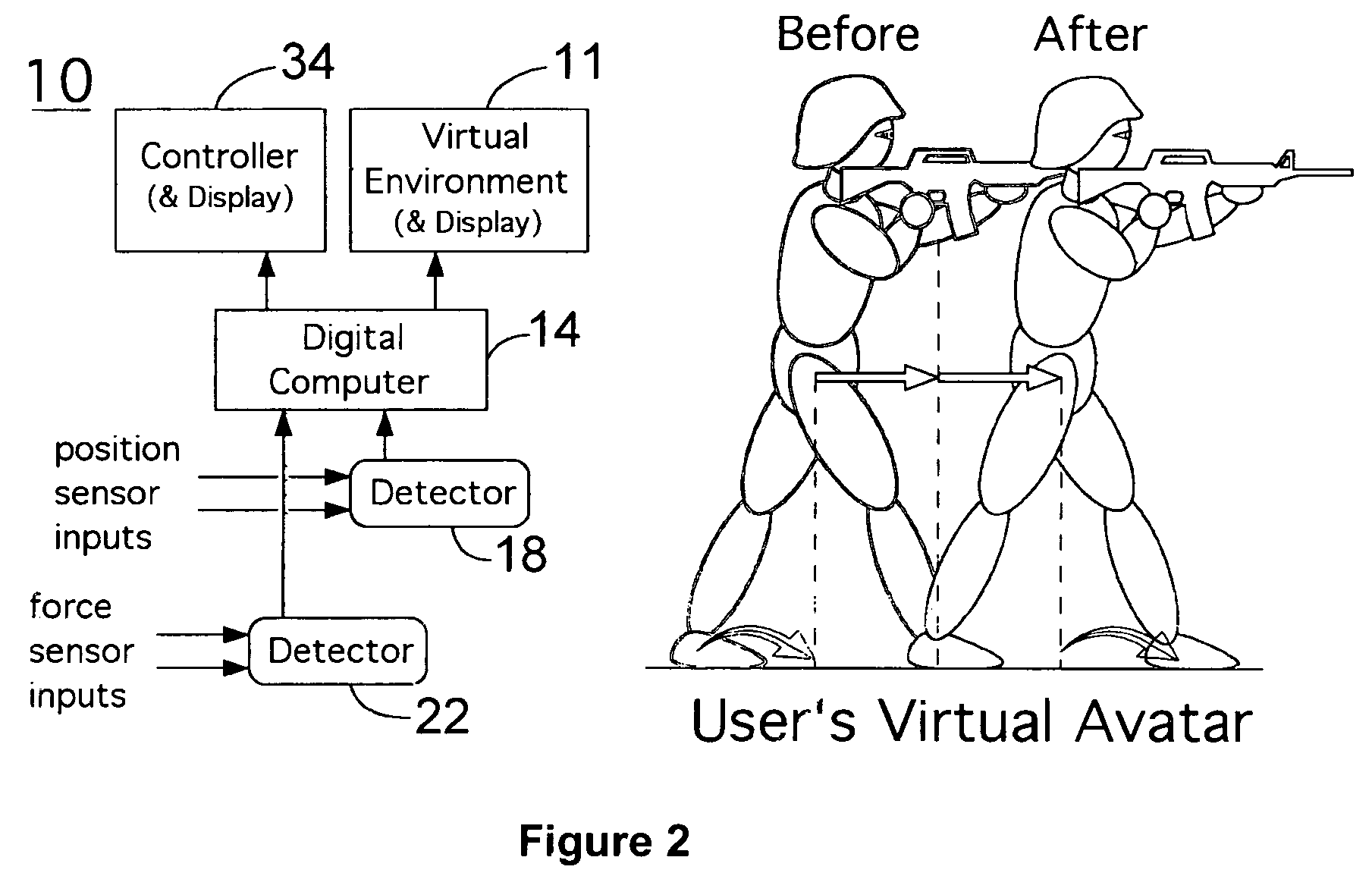Simulated locomotion method and apparatus
a locomotion and simulated technology, applied in the field of simulated locomotion methods and apparatus, can solve the problems of not being able to use hands for other, more normal tasks, and not being able to look and move independently, so as to reduce the footprint and overall size of the system, reduce the vertical extent of the space, and reduce the effect of system footprin
- Summary
- Abstract
- Description
- Claims
- Application Information
AI Technical Summary
Benefits of technology
Problems solved by technology
Method used
Image
Examples
Embodiment Construction
[0024]DEFINITION(S): The term “tracker” as used herein includes the following: A tracking system made up of a set of components that allow a position detector to determine one or more of the spatial coordinates (X, Y, Z, Yaw, Pitch, Roll) of one or more tracked elements (e.g., parts of the body). Many tracking systems require the attachment of one or more tracking components to the tracked element. A “sensor” is a device that registers specific forms of structured energy. Position detectors take in readings from one or more sensors to determine the coordinates of tracked elements. In the case of a conventional optical tracking system, a set of markers is attached to the element to be tracked, visible to optical sensors mounted in the room. Other tracking technologies, including acoustic and potentially RF tracking, may adopt a similar configuration. One or more emitting or reflective elements for the sensed form of transmitted energy is attached to the tracked element and sensors ar...
PUM
 Login to View More
Login to View More Abstract
Description
Claims
Application Information
 Login to View More
Login to View More - R&D
- Intellectual Property
- Life Sciences
- Materials
- Tech Scout
- Unparalleled Data Quality
- Higher Quality Content
- 60% Fewer Hallucinations
Browse by: Latest US Patents, China's latest patents, Technical Efficacy Thesaurus, Application Domain, Technology Topic, Popular Technical Reports.
© 2025 PatSnap. All rights reserved.Legal|Privacy policy|Modern Slavery Act Transparency Statement|Sitemap|About US| Contact US: help@patsnap.com



